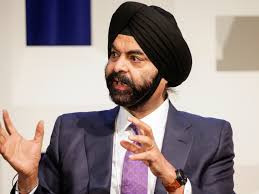
My heart bleeds every time I see brands, both small and big, failing to understand the dynamics at play as they grapple with communicating their brand’s storyline, especially on social media. This plays out in the Zimbabwean context mainly because the entire management will be hinged on the nuts and bolts of yesteryear, when communication was a monologue enterprise. Sadly, when some of the brands attempt to compete online, they simply export the offline mindset and maintain the business-as-usual approach.
marketing insights with TABANI MOYO

There are those brands which have built a culture of responding to every slight provocation online with disproportionate irritation and anger, to the extent that they end up mobilising even those that were seated on the fence to attack their brands. This is mainly because the brands will be attempting to portray a different personality to that of their true character, especially with regards to delivering on their promise.
In most of the situations, brands are generally stuck in the traditional communication mindset, forgetting that the ultimate jury on the platform is an informed web of netzens who can easily mobilise and fall on the brand architecture like a tonne of bricks!
So how do other brands manage to create a progressive brand culture using the social media, as mobilisation for the collective good of the brand while others are reduced to punching bags? This week, we focus on the fascinating subject of mastering the effective ways of getting the brand culture through the social media.
The whole process of understating the role of the brand culture as a mobilising agent of brand’s positive change, emerges from the understating that if the brand culture is accepted by the legion of enthusiastic and credible brand advocates, it propels the brand’s acceptance and preferences, which in the long run leads to sustainable profits.
To start with, there is a need for local brands to appreciate that they need people with skills and ability to intentionally set their respective brands on the wave of the sharing culture, which is unstoppable. The pulse of building an online brand culture is the ability of the brands to generate conversations that attract a sharing economy among the billions of online publics.
It is equally worthwhile remembering that the brand’s performance offline will be mirrored online. Poor performance offline will not sublimate into a magical product because of the packaging online. For example, no matter how Colcom’s pork pie is branded online, that will not compensate for the poor pastry, literally without any meat at all which is sold in the retail outlets. Actually, the frustrated customers will take pictures of the product and post it online, to harvest the online anger and co-ordinate rebellion. To avoid falling into the trap of being online punch-bags while other brands become run-away success stories, we need to take note of the following cardinal five steps:
- Chamisa under fire over US$120K donation
- Mavhunga puts DeMbare into Chibuku quarterfinals
- Pension funds bet on Cabora Bassa oilfields
- Councils defy govt fire tender directive
Keep Reading
Establish a focused communication strategy
A successful strategy is the one that communicates the inner soul of the brand. Answering to what the brand uniquely stands for and how it attempts to satisfy the customer’s needs. Hence the brand drivers should start from a strong introspection point of view. This will help the brand managers in deciding how they will occupy the customer’s mindset as a way of brand positioning. For example, fizzy drinks are hazardous to health. But the global brand Coca-cola does not communicate the product features. It communicates the soul of its existence, which is happiness. The “share a Coke” campaign will go down the history books as one of the most successful for the fast-moving goods because it hammered and consistently communicated a single-minded message of “open happiness”. This calls for the brand managers to decide on the core brand message to communicate online, which will attract the most sharing among the audience.
It’s everyone’s responsibility to share the brand culture
Though it is usually the role of the marketing and senior management teams to define the brand identity and personality, it is everyone’s responsibility to share the brand culture online. This is achieved through engaging colleagues to buy into the brand culture; engagement of customers to become brand ambassadors by communicating what they love most about their brand and seeking celebrity endorsements at every opportunity that might arise. For example, the “only black-owned energy drink in South Africa” Mo Fire capitalises on every opportunity to share the product with celebrities so that they influence their communities on the brand choice. A classical example is when the owner, Dj Sbu was a director of ceremony at an event where the president of South Africa, Jacob Zuma was a guest of honour, he shared the Mo Fire can and the president reciprocated by drinking it in public, boasting the nation’s confidence in the product. However, the company should always make the decision of the people trusted to share the brand culture.
Invest in relationship building
If the company decides to share the brand culture, it should be willing to give the brand for free at times and improving on it as it gets feedback from the online platforms. This entails the decision by the brand to bring people together and making them feel good at times. An immediate example of a brand that has taken this route include Bon Marche, which is now popularly known for its “walkathon” events. It ceases to be the retail shop, by a sensitive brand that communicates healthy living online and living it offline.
Live the brand reality
As I noted, for the brand to enjoy a running success online, it should be prepared to live the brand reality, rather than preaching through online platforms. Customers on social media are always on standby to attack brands that are hypocritical.
Remain open and engaging
As I pointed out in the beginning, when brands take the decision to go online, they lose control altogether. Allow both the enthusiasts and those that are adversarial to express their affection or resentment. While at it, acknowledge and appreciate the positive feedback and correct information that might be incorrect in a tolerant manner.
Tabani Moyo is a chartered marketer, brand strategist and communications officer based in Harare. He can be contacted at [email protected]
*This article was contributed on behalf of the Marketers Association of Zimbabwe. For further information, contact [email protected] or visit the website www.maz.co.zw.











